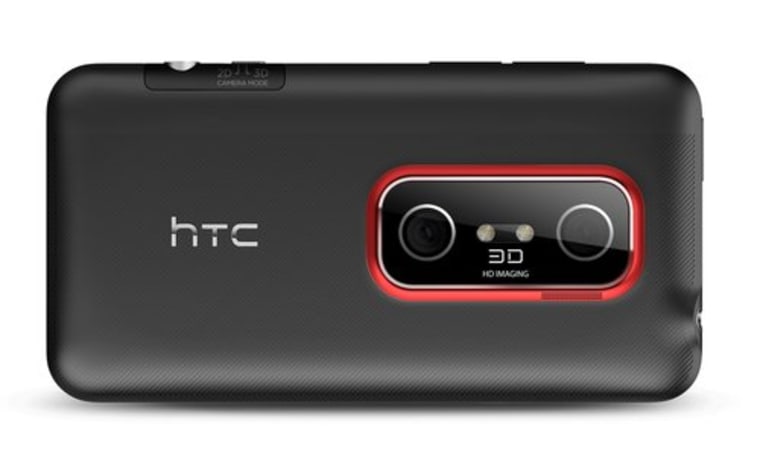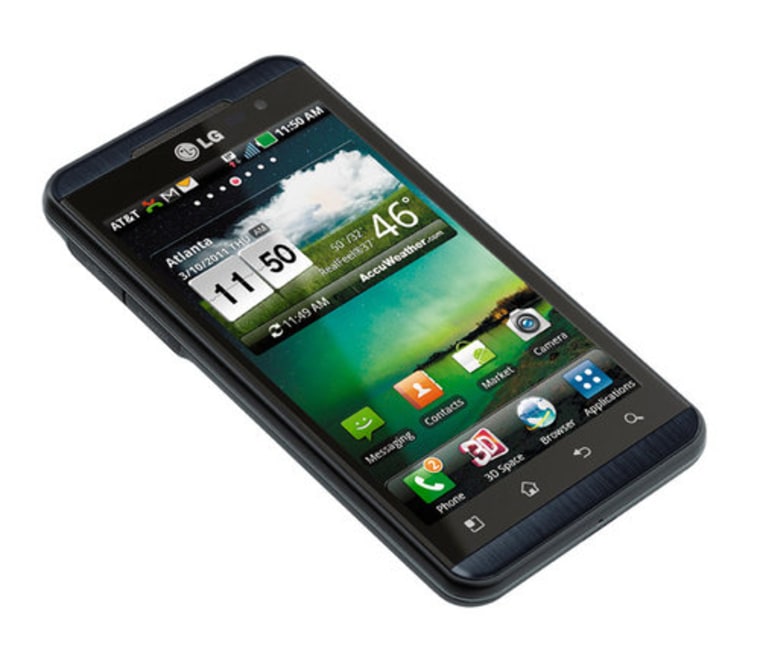A couple of years ago, the first modern 3-D movies using polarized glasses started hitting theaters on giant screens. About a year ago, the first 3-D TVs arrived, with large-screen 3-D laptops following shortly after. Today you can get 3-D on the Nintendo 3DS’s 3.5-inch display and by this summer there will be smartphones with 4.3-inch 3-D displays, including the HTC Evo 3D (on Sprint) and the LG Thrill (on AT&T).
When 3-D gets that small is it enjoyable? Surprisingly, the answer is yes.
One of the biggest things going for small screen 3-D is that you don’t have to wear glasses to get the 3-D effect, which clinches it for me. You simply hold the device about 10 to 14 inches away and you’ll see 3-D.
When the devices are held properly, the 3-D images are bright and clear and can deliver a really exciting new experience. For example, in the golf game I played on the LG Thrill, the fly-through of the fairway before you play each hole gives you a much better appreciation of the terrain. While playing Nintendogs and Cats on the Nintendo 3DS, you can actually hold your virtual puppy. Try to do that in 2-D.

All of these devices can take and play 3-D videos and stills. The ones you capture with the device’s camera are typical phone quality — decent outside and poor in low light. It was a lot of fun, though, to see the 3-D effect. I’d definitely use that feature, especially since you get a 2-D version of anything you shoot as well. You can also view content like 3-D movie trailers and YouTube clips, and these looked great on all the devices.
In fact, I like 3-D portable devices better for viewing 3-D movies and pictures than playing 3-D games. That’s because there is a sweet spot for being able to see the 3-D effect. If you move the phone or game system more than a couple of inches from that sweet spot, as I sometimes do in driving and flight simulator games, you lose your 3-D. On the Nintendo 3DS, you can turn the 3-D off — even during game play. There’s a little physical slider right next to the display.
In the end, the 3-D on any of these devices is just a feature. The displays on the Nintendo 3DS, HTC Evo 3D and LG Thrill are bright and deliver a noticeable 3-D effect, but when you’re viewing 2-D content you’d never know they are 3-D capable displays. They work perfectly well in 2-D as a game system or smartphone. But 3-D really does add to the experience.
More stories from Techlicious:
- Review: Nintendo 3DS Delivers Serious Mobile Gaming
- The Best Fitness Games
- Sony Introduces the Next Generation Portable Gaming System
Chat with Suzanne on Facebook or get her daily Techlicious Newsletter.
